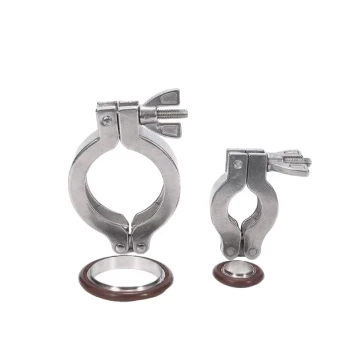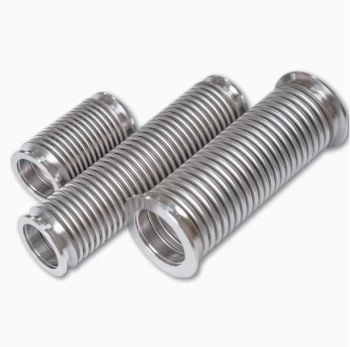In short, Polycrystalline Wool (PCW) is a synthetic high-performance insulation material designed for the most demanding industrial environments. Composed of high-purity alumina and silica fibers, it is engineered to withstand continuous operating temperatures above 1300°C and resist aggressive chemical attack where other refractory materials would fail.
Polycrystalline wool is not a general-purpose insulation; it is a specialized solution. It is selected when the combination of extreme heat, chemical exposure, and the need for low thermal mass makes conventional refractory ceramic fibers (RCF) or insulating firebricks unsuitable.
Understanding the Core Properties of PCW
To understand where PCW is used, you must first understand what makes it unique. Its performance is a direct result of its specific chemical composition and microscopic structure.
The Alumina-Silica Backbone
PCW consists of fibers containing 72% to 99% alumina (Al2O3), with the remainder being silica (SiO2). This high alumina content is the primary reason for its exceptional temperature resistance.
The fibers are often formed in the stable mullite crystal phase (3Al2O3·2SiO2), which is renowned for its high melting point and excellent strength at high temperatures.
The "Polycrystalline" Advantage
Unlike standard glassy fibers that can soften and degrade over time at high temperatures (a process called devitrification), PCW fibers are polycrystalline. This means each fiber is composed of many tiny, interlocking crystals.
This structure provides superior thermal stability, preventing the fibers from shrinking, becoming brittle, or losing their insulating properties even after long exposure to extreme heat.
Low Thermal Mass and Conductivity
Like other fibrous insulation, PCW's wool-like structure traps a significant amount of air. This makes it an excellent insulator with very low thermal conductivity.
Its low thermal mass is also a critical benefit. PCW-lined equipment heats up and cools down much faster than equipment lined with dense refractories, leading to significant energy savings and increased productivity in cyclical operations.
Key Applications and Use Cases
PCW is specified for applications where temperature or chemical conditions push beyond the limits of other materials, typically above 1250°C-1300°C.
High-Temperature Industrial Furnaces
PCW is a primary choice for lining heat treatment, forging, and ceramic firing furnaces that operate at very high temperatures. It is often used in modules, blankets, or as a veneer over existing refractory linings to improve efficiency.
Petrochemical and Chemical Processing
In ethylene crackers, reformers, and process heaters, PCW provides critical insulation. Its high chemical resilience makes it resistant to the reducing atmospheres and chemical vapors common in these environments.
Aerospace and Automotive
The material's combination of extreme temperature resistance and low weight makes it suitable for specialized applications, such as heat shields, automotive catalytic converter insulation, and other components where performance is paramount.
Understanding the Trade-offs
Choosing PCW involves a clear understanding of its position in the market. It is a premium product with specific trade-offs.
The Primary Factor: Cost
The most significant trade-off is cost. PCW is considerably more expensive than Refractory Ceramic Fiber (RCF) or Alkaline Earth Silicate (AES) wools due to its complex, energy-intensive manufacturing process. Its use is an investment justified only by severe operating conditions.
Mechanical Limitations
While thermally stable, PCW is a soft, fibrous material. It has low resistance to physical abrasion and mechanical impact. In environments with high gas velocities or direct flame impingement, it often requires a protective rigidizer coating or must be installed behind a more durable hot-face layer.
Making the Right Choice for Your Goal
Selecting the correct insulation requires balancing performance requirements against budget. The decision to use PCW is almost always driven by necessity.
- If your primary focus is cost-effectiveness for applications below 1250°C: Standard RCF or AES wools are almost always the more appropriate and economical choice.
- If your application operates continuously above 1300°C or involves harsh chemicals: PCW is the correct technical specification to ensure long-term reliability and safety.
- If your goal is to reduce furnace cycle times and save energy in high-temperature processes: The low thermal mass of PCW provides a clear and justifiable return on investment.
Ultimately, choosing Polycrystalline Wool is a decision to prioritize long-term performance and reliability in environments where failure is not an option.
Summary Table:
| Property | Description |
|---|---|
| Composition | High-purity alumina (72-99%) and silica fibers in mullite phase |
| Temperature Resistance | Continuous use above 1300°C |
| Key Advantages | Superior thermal stability, low thermal conductivity, chemical resilience, low thermal mass |
| Common Applications | High-temperature furnaces, petrochemical processing, aerospace heat shields |
| Trade-offs | High cost, low mechanical abrasion resistance |
Upgrade your high-temperature processes with KINTEK's advanced furnace solutions! Leveraging exceptional R&D and in-house manufacturing, we provide diverse laboratories with tailored high-temperature furnace systems, including Muffle, Tube, Rotary Furnaces, Vacuum & Atmosphere Furnaces, and CVD/PECVD Systems. Our strong deep customization capability ensures we precisely meet your unique experimental needs, enhancing efficiency and reliability in extreme conditions. Contact us today to discuss how our solutions can benefit your specific applications!
Visual Guide

Related Products
- High Temperature Muffle Oven Furnace for Laboratory Debinding and Pre Sintering
- Laboratory Muffle Oven Furnace with Bottom Lifting
- 1400℃ High Temperature Laboratory Tube Furnace with Quartz and Alumina Tube
- Silicon Carbide SiC Thermal Heating Elements for Electric Furnace
- Multi Zone Laboratory Quartz Tube Furnace Tubular Furnace
People Also Ask
- What is the use of furnace in laboratory? Unlock Precise High-Temperature Control for Material Transformations
- What is an atmosphere protection muffle furnace? Unlock Precise Heat Treatment in Controlled Environments
- What is MoSi2 heating element? A Guide to Extreme-Temperature Stability Up to 1800°C
- What is the use of a laboratory furnace? Unlock Precise Material Transformation
- What factors need adjusting in an atmosphere protection muffle furnace? Optimize for Process Control and Safety

















